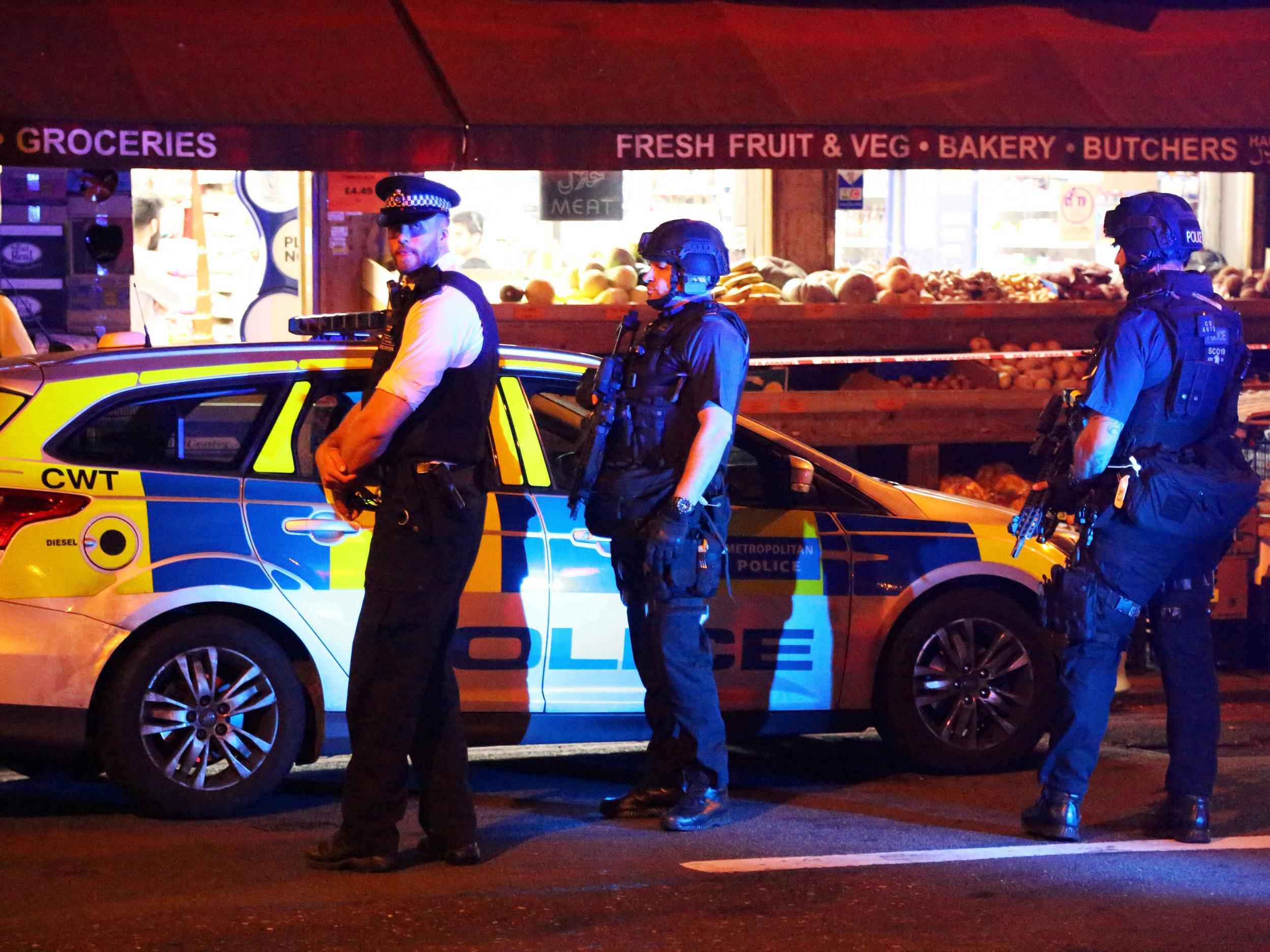Let’s not pigeonhole the Finsbury Park attacker as an oddball loner – he may well be part of something bigger
We must accept that there are dots to be joined between Mair, Breivik and Lapshyn – and perhaps the person who drove his van into a crowd of Muslims in Finsbury Park


What does terrorism look like? In this country we think perhaps first of bombs; of explosions that destroy buildings and lives, buses and tube carriages. We got used to bombs when the IRA was at its most active. After 7/7, we had to get to grips with the idea that explosives need not be “planted”, but could be detonated by a person willing to lose their own life in the act of taking others.
In the last year, we have seen cruder acts of terror too. Cars and vans, hired specifically to kill, have been used to devastating effect. Attackers have run amok with knives. In every case bodies have been strewn around; blood has spattered pavements; families and communities have been left grief-stricken.
But what does a terrorist look like? Thirty years ago we would probably have imagined a white Irishman, maybe with his face partially covered by a balaclava. Today, in the UK, our first thought on hearing about a terror attack might be to envisage a Muslim – of Asian heritage perhaps, a beard? Every age has its own bogeymen, each different but conforming in equal measure to a stereotype.
What then to make of the latest attack to hit Britain this year? After Westminster, Manchester and Borough Market, Finsbury Park is the latest venue to play host to apparent terrorism. Once again, a vehicle has been weaponised, seemingly driven with intent into a crowd of innocent people. And yet the driver, now under arrest, is a white man; the victims of the latest tragedy had been attending prayers at a local mosque. Witnesses report that the man shouted “I want to kill all Muslims”.
As news of the horror broke, some reports raised the spectre of “terror” straight away; others were more cautious about the nature of what had happened. A few voices expressed suspicion – misplaced, it seems – that the media was deliberately avoiding the term because, while the scene might have resembled terrorism, the suspect didn’t conform to our current vision of a terrorist.
In fact, with the police confirming that they are treating the incident as a terror attack, media reports quickly followed suit. Yet with a man in custody, there will be more challenges to come for journalists and commentators when legal proceedings seek to establish the facts of the case and the motivations of the driver.
After every act of terror we demand answers to the same old questions: what ideology drove the culprit; how was he (almost always he) radicalised; how could a person be so hate-filled that they would take innocent lives of people they knew nothing or little about? And for the most part we prefer simple solutions. The IRA’s aims – and the context of its establishment – we could more or less understand; their methods were horrific but broadly conventional. Islamist extremists, motivated by a twisted vision of religion, seem also to have a shared conviction in an armed struggle – albeit one which is framed as a clash of civilisations. Their links, real or imagined, to Isis and other similar groups bolster the impression that they are part of something bigger than their own actions.
But when it comes to terror attacks that sit outside such established narratives we seem to struggle. Consider the murder last year of Jo Cox MP by Thomas Mair – a politically motivated act, influenced by an obsession with Nazism and distaste for multiculturalism. Or Anders Breivik, the mass killer who had a hatred of immigrants, especially Muslims, and of the social democracy which had permitted Norwegian society to become something he detested. Or Pavlo Lapshyn, convicted in 2013 following the murder of an elderly Muslim and the bombing of several mosques, was a white supremacist.
Without obvious connections between these men, and with no overarching group to which they all pledged fealty, the crimes they commit tend to be presented as one-offs. The men are often “loners”; “oddballs” who had struggles with mental health or difficult family backgrounds.
Those descriptions may well be accurate of course; just as they might in relation to many of those who end up being labelled merely Islamists. After all, it is almost always a range of factors which lead a person to become a terrorist.
We should always be reluctant to reach simplistic conclusions about why someone becomes a violent extremist. But equally we must accept that there are dots to be joined between Mair, Breivik and Lapshyn – and perhaps the person who drove his van into a crowd of Muslims in Finsbury Park – just as there are between Islamists such as Salman Abedi, Khuram Butt and Michael Adebolajo. To confront ideologies of hate, we must first recognise them – whether they have developed from religious zeal or from nationalistic or racist creeds. And in the end we must dismantle them all.
